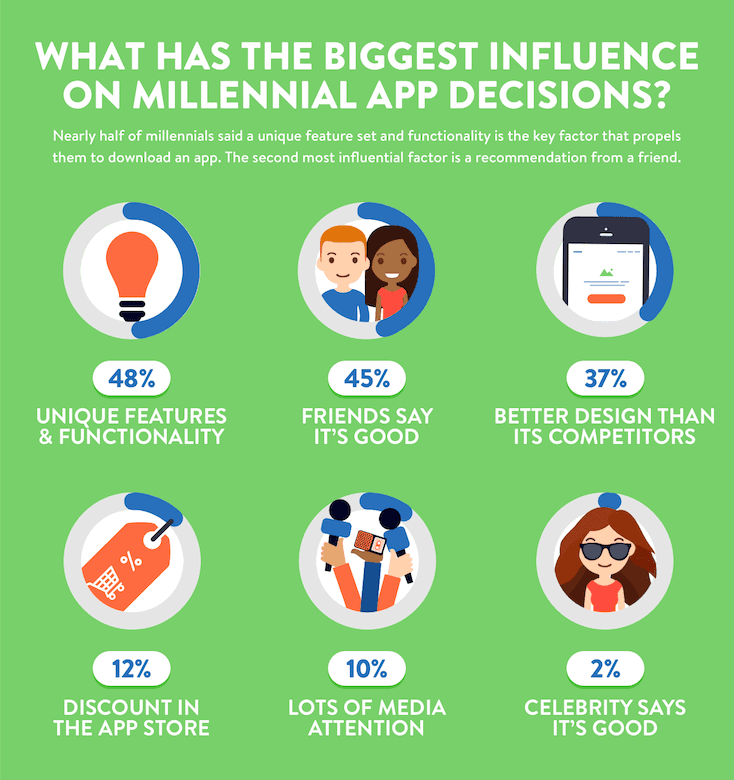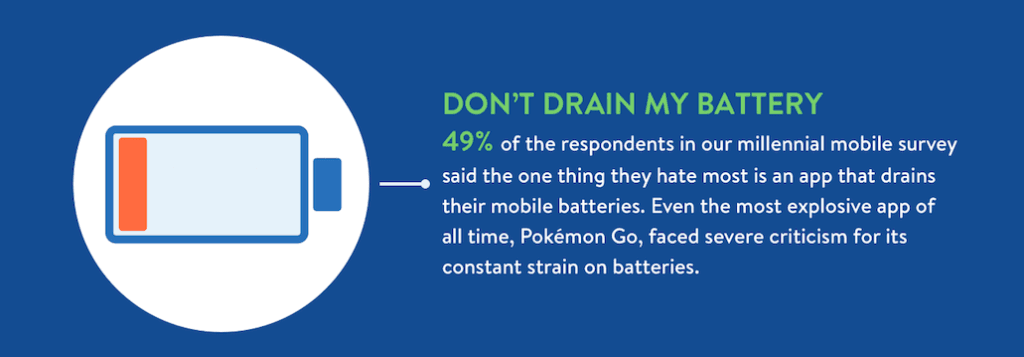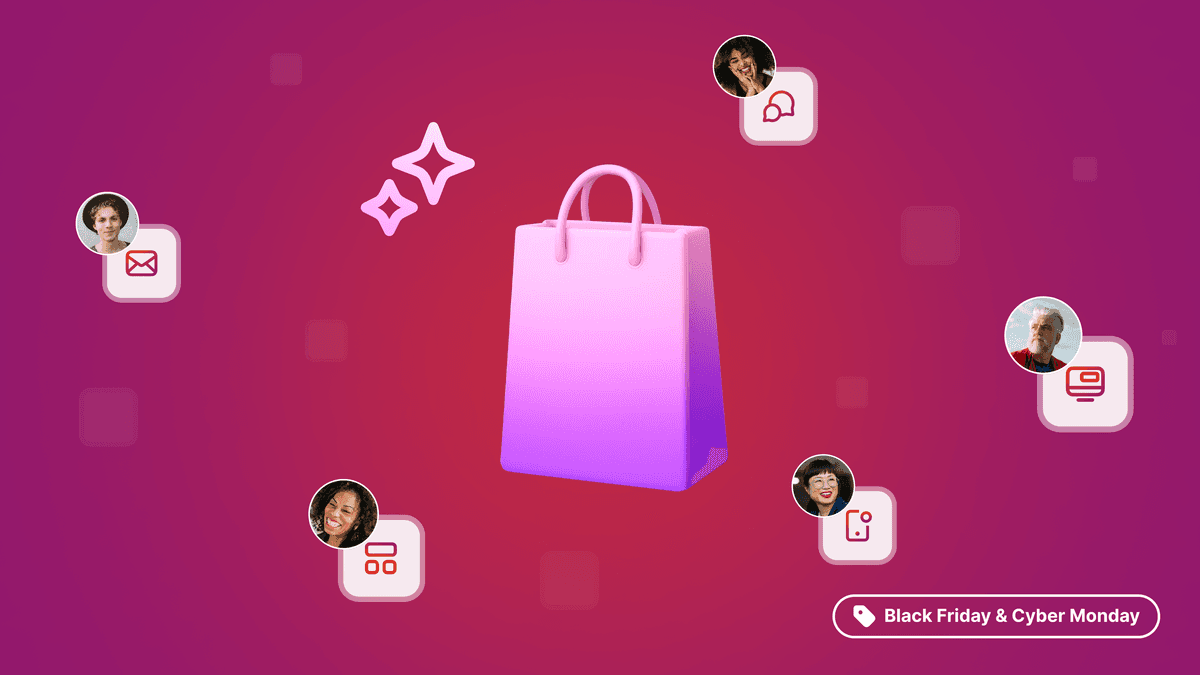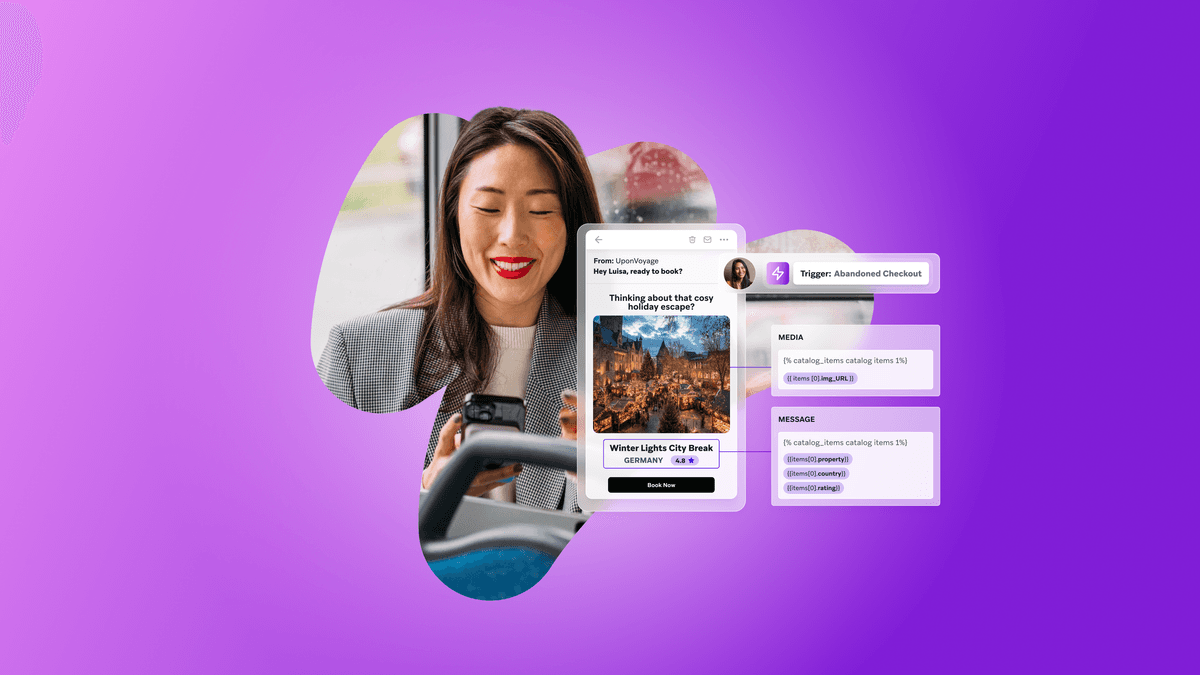How to Acquire and Retain Millennial App Users
Published on December 19, 2016/Last edited on December 19, 2016/5 min read


Team Braze
From tweeting the word “fleek” to participating in the Mannequin Challenge, app marketers around the world are itching to capture millennials’ attention. Millennials have been an interesting target audience for years, but as they’ve aged, the group has evolved into one of the most profitable audiences in the app industry.
As a result, executives and marketers are asking one simple question in boardrooms across the world:
How do we build an app that millennials actually want?
Unfortunately, in most cases, this question never leaves the boardroom. The conversation takes place behind closed doors, and decisions are made without an actual understanding of the motivations, wants, and needs of millennials—a mistake that often buries projects in the app graveyard, never to be heard from again.
The best app marketers take time to understand what their audience wants and then leverage that insight to build a quality acquisition and retention plan. Appboy’s Spring 2016 Mobile Customer Retention Report revealed an insight that should be plastered on every app marketer’s wall:
Fewer than one in four people who use an app [for the first time] will come back…
Why is this important?
Because it illustrates why acquisition is just ONE piece of the puzzle. In addition to establishing marketing channels that will inspire people to download your app, you need to ensure your app is built in a way that inspires users to stick around.
To help you reach and keep that coveted millennial audience, here are some ways you can achieve success through both acquisition and retention.
How to Acquire and Retain Millennial App Users
How To Attract Millennials To Download Your App
Include Social Media In Your Marketing Mix
The folks at MindSea recently conducted some great research on millennials and their relationship with mobile apps. In the study, MindSea found that 45% of millennials rely on friends’ app suggestions. As such, it’s important that you have channels in place that allow app users to easily and quickly tell your brand’s story.

The biggest benefit of social media marketing is the app marketer’s ability to share a story with a specific audience and then let friends spread the story amongst each other. Take advantage of channels like Instagram and Facebook to disseminate your brand’s story. Share announcements, tips, tricks, images from your app, and hidden easter eggs to keep people engaged and interested in what you’ve built.
Leverage App Store Optimization
One of the best ways to market a mobile app is to invest time in understanding and utilizing app store optimization (ASO). As explained by Moz in their App Store Optimization Checklist, it’s important for app makers to choose the right app name and include keywords in the title to increase their visibility in searches. Bill Wilson, President of MindSea, offers a great format for ASO in his list of things to do before launching in the app store.
Wilson starts by looking at the titles of some of the most popular meditation apps:
- Calm: Meditate & relax with guided mindfulness meditation for stress reduction
- Stop, Breathe & Think: Meditation tailored to your emotions
- Headspace – Guided meditation and mindfulness techniques
Upon noticing a keyword and description trend, Wilson recommends that app makers consider using the template [App Name]: [Description with keywords] when naming their apps for the Apple App store.
How To Keep Millennials Engaged With Your App
Don’t Be A Drain On Users’ Batteries
One of the biggest mobile app pet peeves amongst millennials is the drain on their phones’ batteries. As technology has evolved over the years, we’ve enjoyed the luxury of increasingly better graphics and mobile experiences. Unfortunately, many of these features come at the cost of a significant drain on battery life.
When building an app, do your best to limit how much your mobile experience will drain a phone’s battery life. It’s not always easy, but if you want to retain millennial users, battery life can play a significant role in whether you succeed.

Improve Your Push Notifications
Appboy research has found that consistent engagement during the first month results in 90% audience retention. One tactic app marketers often use to drive engagement is push notifications. Unfortunately, research from MindSea highlights that 41% of millennials dislike apps that send too many notifications. This is consistent with findings that revealed that people who receive notifications they’re unhappy with are more likely to opt out of push notifications entirely or uninstall the app.
If you’re looking to drive engagement with push notifications, a great starting point is to write better push notifications. Use copywriting tactics that connect with your users on an emotional level, and offer value when users respond to notifications. In doing so, you will be able to drive early engagement and increase the likelihood of retaining your users long-term.
Wrapping Things Up
Of course, these are just some of the ways to acquire and retain millennial app users. And the first step before implementing any of the tactics above is to spend time understanding your audience and learning about their mobile behaviors.
To help you get started, I’m going to leave you with the full infographic and research study from MindSea so you can better understand what millennials really want from mobile apps.

Share this Image On Your Site
<p><strong>Please include attribution to MindSea with this graphic.</strong></p><p><a href=’https://appboy.com/acquire-retain-millennial-app-users/’><img src=https://www.appboy.com/blog/wp-content/uploads/2016/12/Millennial-App-Marketing.png?ssl=1′ alt=’What Millennials Want From Mobile’ width=’1200′ border=’0′ /></a></p><p>
Be Absolutely Engaging.™
Sign up for regular updates from Braze.
Related Content
View the Blog
How behavioral marketing turns data into personalized experiences

Team Braze

How Braze supports exceptional customer engagement during Black Friday, Cyber Monday, and beyond

Todd Grennan

How to overcome messaging fatigue this holiday season
